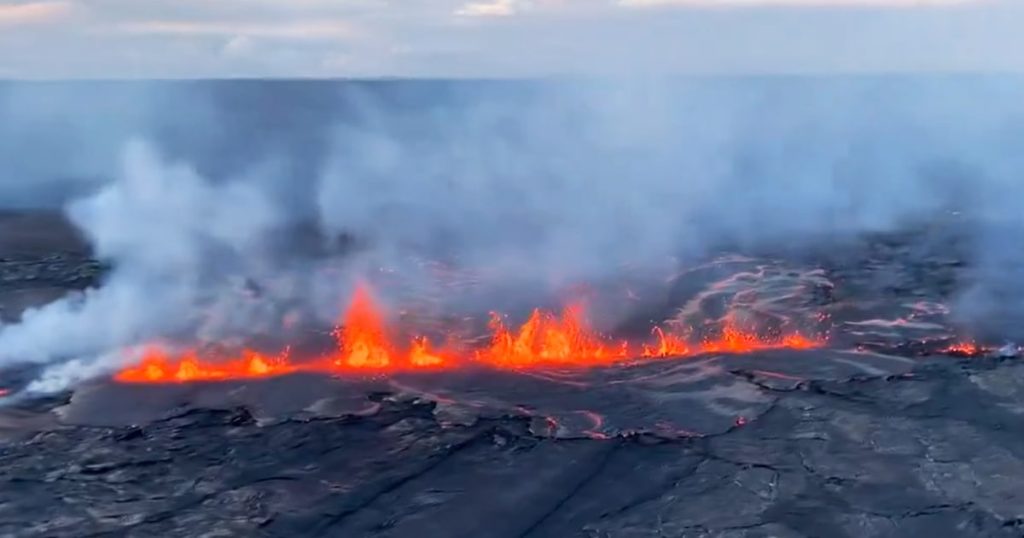Kīlauea, the second largest volcano in Hawaii, erupted early Monday morning through four fissures located southwest of its caldera, with only one active fissure remaining by the afternoon. The eruption posed no threat to nearby communities on the Big Island, and the volcano threat level was downgraded from warning to watch, indicating limited hazards. The eruption took place in a remote area within Hawaii Volcanoes National Park that had been closed since 2008 due to safety concerns related to sulfur dioxide emissions and previous eruptions.
Federal geologists compared this eruption to one that occurred in the same location in December 1974, which lasted six hours. The eruption was described as a “sneaky” event by scientist-in-charge Ken Hon, and was accompanied by more than 400 small earthquakes, ground deformation, and elevated sulfur dioxide gas emission rates. The increased seismic activity prompted the USGS Hawaiian Volcano Observatory to raise Kīlauea’s alert level. Gas emissions remained a primary concern following the eruption, leading to the closure of certain areas within the national park, including Maunaiki Trail and Kulanaokuaiki Campground.
Although the eruption was detected by various monitoring equipment including seismometers, GPS monitors, and gas detectors, officials did not anticipate significant threats to nearby communities as the eruption could end without producing much lava. The eruption site was closely monitored by the Hawaiian Volcano Observatory in Hilo, and the observatory’s scientists observed a significant increase in seismicity and ground deformation prior to the eruption. The eruption site was located within a closed zone surrounding the caldera, and officials were cautious about the potential impact on Big Island communities.
Kīlauea is known for its frequent eruptions, having erupted almost continuously from 1983 to 2018, with its last eruption occurring in September. The volcano’s history of eruptions and volcanic activity has made it an area of interest for scientists and researchers. The USGS highlighted the volcano’s overachieving nature in its primer on Hawaii volcanoes, noting its continuous activity over the years. Despite the relatively small scale of the recent eruption, officials remained vigilant in monitoring gas emissions and seismic activity to ensure the safety of the surrounding areas and communities.
The eruption at Kīlauea serves as a reminder of the volcanic activity that characterizes the Hawaiian Islands and the need for ongoing monitoring and preparedness measures. The eruption, while relatively minor, showcased the potential hazards associated with volcanic activity and the importance of monitoring equipment in detecting early warning signs. The closure of certain areas within Hawaii Volcanoes National Park underscored the need for caution and preparedness in the face of natural disasters such as volcanic eruptions. The USGS and other agencies will continue to monitor Kīlauea and other volcanoes in the region to ensure the safety of residents and visitors on the Big Island.


